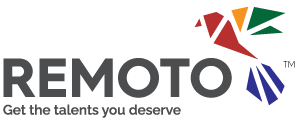Are you looking for better ways to measure and assess your company’s productivity, engagement, and impact? Are you trying to find a way to evaluate employee contribution and performance effectively? HR KPIs and talent scorecards can provide the answers.
These tools help remote employees understand their role in achieving companies’ objectives while allowing employers, HR specialists, and managers to track progress toward those goals. It’s an invaluable tool that enables entrepreneurs, recruiters, and head office staff alike to make well-informed decisions on how best to optimize their team’s potential.
This blog post will explain HR KPIs and talent scorecards and why they are essential for effective performance management and maximum workplace efficiency outcomes. Additionally, we’ll discuss actionable strategies for implementing them both successfully within your business.
Unlock Your Team’s Potential: Harness the Power of HR KPIs for Success
Human Resources Key Performance Indicators (HR KPIs) are invaluable for assessing team performance. By establishing goals and objectives that can be tracked consistently, these indicators offer tremendous insight into the performance of a company, department, or individual.
Typically, HR KPIs can cover recruitment and retention metrics like:
- Headcount: Total number of employees within a company.
- Acceptance rate: Measures the likelihood of potential employees accepting offers after applying for a job and attracting top talent.
- Employee engagement: Tracks employee satisfaction with a company’s culture, policies, compensation benefits, and working environment.
- Employee retention: Calculates how many existing staff members remain with a company over time.
- Turnover rate: Indicates the rate at which workers leave or resign from their positions within a company.
- Recruitment success rate: Measures the success rate in obtaining new talent through recruitment efforts or talent acquisition strategies.
- Cost-per-Hire: Tracks how much money is spent on recruiting and hiring new staff members.
- Time-to-fill: Monitors how long it takes for recruiters to find suitable candidates for open roles in a workforce
- HR expense factor: Determines the total cost associated with managing all aspects of human resources operations within the company
- Workforce spans and layers: Measures the total number of employees across different company levels, departments, and locations.
- Diversity metrics: Evaluates the diversity of a company’s workforce, including factors such as gender identity, ethnicity, and work background.
- Training ROI: Measures the effectiveness of training by comparing the learning and career development outcomes to their impact on productivity. It also analyzes how well teaching and development investments are paying off in terms of increased efficiency and improved results.
- Coaching equity: measures the effectiveness of managers in providing equal access to development opportunities for all employees.
By effectively utilizing HR KPIs, small businesses are able to understand how their people management strategies are performing and make informed decisions for a better working environment.
Score Big on Employee Performance with a Talent Scorecard!
A talent strategy scorecard is an invaluable asset to track employee performance, especially when combined with other metrics like team surveys and performance reviews. By incorporating these various data points together, companies can gain a comprehensive understanding of the strengths and weaknesses of their remote employees for more effective decision-making.
Additionally, a talent scorecard allows business owners to easily measure and compare individual performance over time. Scorecards allow businesses to implement standardization among teams and departments, ensuring they adhere to defined processes while aligning their operations with business objectives.
By introducing a talent scorecard, you can keep your remote employees motivated and performing at their best to keep your business competitive and successful.
Here are some strategies to help you optimize employee performance with a talent scorecard.
Track Your Remote Team Performance
With a talent scorecard in place, businesses can track remote teams‘ performance continuously and ensure that everyone is held accountable for results. This can encourage teams to work better together, maintain high standards, and identify any potential lack of alignment between team members, enabling action to be taken if necessary.
Analyze your Organizational Effectiveness
A talent scorecard allows employers to prioritize resources effectively so that the most talented remote employees are given appropriate opportunities to develop and reach their full potential. Its use also promotes management effectiveness by recognizing the value of teamwork and collaboration among team members.
Enhance Talent Management Decision-making
Using a scorecard helps managers make more informed decisions about workforce planning as it provides insight into employee career paths, skills gaps, and overall job satisfaction. It also helps them plan for future growth through succession plans and recruit the right talent in order to maximize business success.
Implement Benchmarking & Business Growth Initiatives
By keeping track of employee performance over time with a talent scorecard, businesses can compare employee scores within departments or across multiple locations to identify best practices and understand any performance gaps that could impact overall business growth strategies.
With accurate data in mind, small business owners or recruiters can develop upskilling or training initiatives.
Using HR KPIs and a Talent Scorecard Together: Maximizing Your Team’s Potential
Looking for ways to unlock the full potential of your company’s human resources? Leveraging HR KPIs and a talent scorecard as complementary tools can help you understand how your team is performing on a granular level.
Here are some ways you can use these tools in tandem to optimize performance.
Goal Setting: Establishing Clear Objectives and Metrics
HR KPIs and a talent scorecard can be an incredible asset when it comes to setting goals for your organization.
From employee development targets to productivity goals, clear objectives that are tracked with data analysis can help you identify areas of growth and opportunity within your team. Regular checkpoints to review performance against these objectives allow you to celebrate successes and course corrections as needed.
Data Analysis: Analyzing HR Analytics to Understand Trends
Data analysis is key to using HR KPIs and a talent scorecard effectively. By analyzing trends over time, you can identify areas of strengths and weaknesses in your team’s performance.
Analyzing data from both sources can provide insights into changes in the talent pool, employee retention, and growth opportunities within the organization. This information can inform short and long-term strategic planning.
Implementation Challenges: Addressing Roadblocks as They Arise
Despite their merits, it’s not uncommon to come across a few roadblocks when utilizing HR KPIs and a talent scorecard together. Engaging with these tools means you are creating a culture of data and performance measurement, which does not happen overnight.
A major challenge in implementing these tools is building a culture of transparency and open communication to optimize their benefits. Addressing issues early and consistently using the tools can help organizations overcome these challenges.
Here are some tips to help you build a culture of transparency and open communication:
- Lead by example and encourage remote employees to speak their minds without the fear of retribution.
- Create opportunities for feedback and encourage your employees to share their honest opinions.
- Foster an atmosphere of mutual trust with your team and be transparent about your company’s plans, goals, and resources.
- Emphasize active listening when communicating with your remote employees.
- Celebrate diversity in your team and work culture.
If you want to expand your knowledge of workplace trust, this TED talk is a must-watch! Get ready for an insightful journey into how trust can cultivate success in your company.
Case Studies: Demonstrating Results Through Real-World Examples
Leveraging case studies can be an excellent way to demonstrate how using HR KPIs and talent scorecards can lead to success. Analyzing data from similar companies can help you see where your team can improve, and identifying areas of strength and weakness through self-analysis can also contribute to creating a strategy for improvement.
Additionally, case studies show the importance of regular feedback to improve employee engagement, which is especially critical for remote teams. As a result, it can be beneficial to create and share case studies highlighting your team’s successes, as this can help strengthen your employer brand and attract top talent to your organization.
You can position your team as a productive and high-performing group of professionals by demonstrating how HR KPIs and talent scorecards have led to a successful business strategy.
Takeaway
In conclusion, HR KPIs and talent scorecards are valuable tools that can help organizations maximize the potential of their teams.
Together, these tools enable organizations to collect key data and insights that help them create strategies to improve their employees’ performance, identify areas of growth, and track progress against a set of clear objectives.
Implementing these metrics can present some challenges, but organizations can successfully integrate these tools to drive results with the right approach, such as creating a culture of transparency and open communication, consistent usage, and proper data analysis techniques.
By leveraging HR KPIs and talent scorecards, organizations can create a competitive advantage in the market by attracting top talent and building stronger brand equity, leading to higher levels of employee satisfaction and increased profitability.
As such, companies prioritizing these metrics will better understand their employees and how they contribute to overall success.














